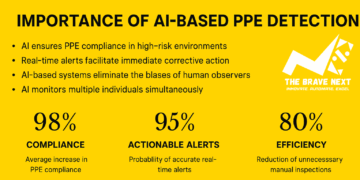Virtual Desktop Infrastructure (VDI) has undergone significant transformation, driven by rapid advancements in cloud computing and the increasing need for remote and hybrid work solutions. In 2025, the rise of Desktop as a Service (DaaS) is reshaping the VDI landscape, offering businesses more scalable, secure, and flexible options for deploying virtual desktops.
Whether you’re an IT decision-maker or a small business owner, understanding how virtual desktop hosting and DaaS are influencing modern VDI strategies is essential for staying competitive and future-ready.
What is Virtual Desktop Infrastructure (VDI)?
VDI is a technology that allows users to access desktop environments hosted on centralized servers. Traditionally, these virtual desktops were managed in on-premise data centers. While this approach offered control and customization, it also required significant IT resources and upfront infrastructure costs.
The Rise of DaaS in 2025
Desktop as a Service (DaaS) builds on the principles of VDI but shifts the hosting and management of virtual desktops to cloud providers. This cloud-based approach means that businesses no longer need to maintain the hardware or software stacks required for on-prem VDI.
In 2025, leading cloud platforms like Microsoft Azure Virtual Desktop, Amazon WorkSpaces, and Citrix DaaS are offering powerful, on-demand virtual desktop hosting services that can scale with business needs.
Key Ways VDI Is Evolving with DaaS
1. Cloud-Native Scalability
DaaS eliminates the traditional capacity limitations of on-prem VDI. Businesses can now scale virtual desktops up or down instantly based on demand—ideal for seasonal workforces or rapid growth.
2. Simplified IT Management
DaaS providers handle updates, patches, backups, and monitoring, freeing up IT teams to focus on strategic initiatives instead of day-to-day maintenance.
3. Improved Security and Compliance
With data stored in the cloud—not on local devices—DaaS provides better control over data access and security policies. Providers often include built-in compliance tools that help meet industry standards such as HIPAA, GDPR, and ISO.
4. Anywhere, Anytime Access
In a post-pandemic world where hybrid and remote work have become permanent fixtures, Virtual Desktop Hosting via DaaS ensures employees can securely access their work environment from any device, anywhere.
5. Cost Efficiency
Traditional VDI requires capital investment in servers and software. DaaS, on the other hand, operates on a subscription or pay-as-you-go model, reducing upfront costs and improving budgeting flexibility.
Where Does Virtual Desktop Hosting Fit In?
Virtual desktop hosting is the service that underpins both traditional VDI and cloud-based DaaS. In the DaaS model, hosting is provided by third-party cloud vendors, eliminating the need for businesses to own and operate physical servers. This hosting flexibility allows businesses to deploy desktops globally, optimize performance, and ensure high availability.
Also Read : How to Deal with QuickBooks Error Code CC-501?
Conclusion
The evolution of VDI through Desktop as a Service (DaaS) is transforming how businesses approach IT infrastructure in 2025. With enhanced security, simplified management, and greater scalability, DaaS is not just a trend—it’s becoming the new standard for virtual desktop hosting.
Whether you’re upgrading your existing VDI setup or starting fresh with cloud desktops, embracing DaaS can lead to lower costs, better performance, and a more agile workforce.
Frequently Asked Questions
What is the main difference between VDI and DaaS?
VDI is typically hosted on-premise and managed in-house, while DaaS is a cloud-based service managed by a third-party provider. DaaS offers more flexibility, scalability, and reduced management overhead.
Is DaaS secure enough for enterprise use?
Yes. Most DaaS providers offer enterprise-grade security features such as multi-factor authentication, data encryption, and compliance tools. Security is often more robust than in traditional office environments.
How is virtual desktop hosting managed in DaaS?
In DaaS, the cloud provider handles the hosting and maintenance of virtual desktops. This includes infrastructure management, updates, backups, and performance optimization.
Can DaaS work for small and medium businesses (SMBs)?
Absolutely. DaaS is highly cost-effective for SMBs, offering access to enterprise-level IT infrastructure without the capital expense of traditional VDI.
What industries benefit most from DaaS in 2025?
Industries like healthcare, finance, education, and legal services benefit from DaaS due to its secure access, compliance capabilities, and support for remote or hybrid work environments.
















